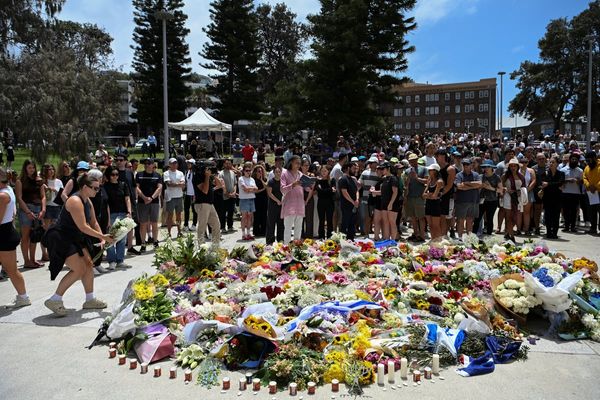
Persistent and heavy rain has caused significant flooding on the mid-north coast of New South Wales, with emergency services issuing warnings for people to evacuate from some low-lying areas on Tuesday afternoon.
The State Emergency Service (SES) said further intense falls of more than 140mm were likely over the 24 hours to Wednesday afternoon, with some isolated areas expecting in excess of 200mm.
Much of NSW’s mid-north coast and Hunter region had so far copped the barrage, with 24 flood rescues in the past 24 hours.
As of Tuesday morning, the State Emergency Service had received 2,000 calls in the same period, responded to 1,400 incidents and evacuated 60 people.
Taree experienced the worst rain, with more than 160mm falling in six hours overnight and 267mm since 9am on Monday.
By Tuesday afternoon, the Manning River at Taree and Wingham had reached the moderate flood level and was rising, with emergency warnings issued asking people in some low-lying areas of Taree and Wingham to evacuate.
The Gloucester River at Gloucester was above the major flood level and rising.
“We ask those in the high-risk areas not to wait until it’s too late – know what you will do if you do need to leave, and follow the advice of emergency services,” NSW SES assistant commissioner Dean Storey said.
Bridges and roads cut
Lisa Mumford, a Burrell Creek resident, was flooded in at her property between Taree and Wingham after flood waters cut off access along Bucketts Way.
“It’s just rained really heavily all night. Really heavy rain but with no break,” she said.
“The creeks are up. They’re all much higher than normal and are rising. You’ve got causeways that are no longer accessible, bridges and driveways that can’t be used.”
Mumford said schools, including the local Tinonee public school, had closed and some childcare centres were operating with reduced staff.
“It’s a major rain event. We’re seeing access to services and towns completely blocked and the forecast is it’s going to continue,” she said.
Dheera Smith, a former mid-north coast councillor and a resident of Mondrook near Taree, said she was also flooded in on Tuesday morning after bridges, including the Bight Bridge at Wingham, were closed due to rising water levels.
“I look down toward the [Manning] River. It’s usually grass pastures but now the river is covering that all over,” she said.
“There was heavy rain all night. The water gauges are full. People who are stuck on their properties – they’ll be stuck a while.”
Minor to major warnings for flooding on catchments across the mid-north coast and Hunter regions remained in place on Tuesday afternoon. Some in Taree were advised to take shelter, while the SES asked people in isolated locations in the area to evacuate, including at Dungog, Paterson, Gloucester, Bulahdelah and Chinchester Dam.
“We are asking the community to be really, really conscious of their location … we are seeing lots of local creeks rise very quickly,” the NSW SES chief superintendent of state operations, Dallas Byrnes said.
“We have had numerous rescues from people entering flood waters [but] we’ve also done the majority from people who’ve just been in the wrong place, and flash flooding has taken them by surprise.”
The NSW premier, Chris Minns, said 1,600 SES personnel had been deployed, 68 schools had closed and there were emergency centres open, including at Taree.
“We’re asking for common sense, a sense of community coming together,” he said.
“We’re hoping and praying that the next 24 hours pass without incidents, but we’re ready in case the worst arrives.”
Dozens of schools were closed on Tuesday in the mid-north coast, Central Coast and Hunter regions due to flooding. The NSW education department reminded parents that schools do not offer minimal supervision during flood events.
Trains were not running between Scone, in the upper Hunter, and Newcastle.
‘Multi-day weather event’
Jenny Aitchison, the minister for roads and regional transport and the member for Maitland, warned people in affected areas not to drive through flood waters.
“It only takes driving through 30cm of flood water to significantly shift your car and lose control. You don’t know what damage has happened underneath that car, underneath that road surface.
“When you take your car into flood waters, you risk not only your own life, but also the lives of those people who will try and save you.”
That call was repeated by the state emergency services minister, Jihad Dib, at a media conference with emergency services on Tuesday afternoon. Dib said too many of the 24 rescues SES teams had conducted over the past day were the result of people going through flood waters.
“I don’t know how many times I need to say this: please, do not drive through flood waters. Not only do you put yourself at risk, you put others at risk and you put them in harm’s way,” he said.
Andrew Cribb, NSW SES northern zone commander, told the media conference that several areas had experienced “unprecedented rainfall” in a short amount of time.
He said short, intense bursts of rain were expected to lead to further flash flooding.
While the Bureau of Meteorology expected damaging winds and surf to ease later on Tuesday, the extreme weather was tipped to stick around for some days.
Steve Bernasconi, hazard preparedness and response manager for the Bureau of Meteorology, told Tuesday’s media conference that the cause of the rainfall was a persistent coastal trough that was currently positioned around the mid-north coast and was expected to track slowly northwards.
“This is … a multi-day weather event that’s turned into a multi-day flood event,” he said.
“And it will be focused on the Hunter and the mid-north coast today and into tomorrow with the potential for rainfall to still persist along the coast into the end of the week and weekend.”







